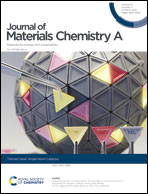Mechanistic understanding and design of non-noble metal-based single-atom catalysts supported on two-dimensional materials for CO2 electroreduction
Abstract
Single-atom catalysts (SACs), which are low-cost, contain earth-abundant metals, and feature two-dimensional material supports, have shown great potential for us in a wide range of electrochemical reactions, including the CO2 reduction reaction (CO2RR) to convert CO2 to valuable chemicals and fuels. In recent years, substantial advances have been achieved in the preparation methodologies, with improved catalytic performances, but the underlying structure–activity relationship from a general perspective remains elusive. In particular, it is urgent to summarize the progress made on SACs with diatom metal centers toward efficient CO2RR. Based on the recent progress in this area, this review synopsizes the fundamental understandings of non-noble metal-based SACs for CO2RR using selected examples. We also highlight the representative atomic structures of active sites from the latest progress, including M–N–C, heteroatom co-doping, vacancy/edge defects and bimetallic SACs, with the aim of elucidating the nature of active sites on various 2D substrates. Moreover, we summarize the spectroscopic and computational studies to verify the atomic-level regulation of the geometric and electronic properties of SACs. We anticipate that this review will deepen the mechanistic understanding of the structure–performance relationship and inspire future studies on SACs for CO2RR.

- This article is part of the themed collection: Single-Atom Catalysis


 Please wait while we load your content...
Please wait while we load your content...